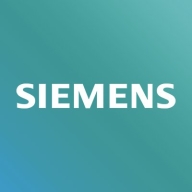

Polarion Requirements and IBM DOORS Next compete in the requirements management software market. Polarion holds an advantage in pricing and support, offering a cost-effective solution, while IBM DOORS Next offers a rich feature set that attracts those willing to invest in comprehensive capabilities.
Features: Polarion Requirements offers collaborative features, customizable workflows, and traceability capabilities. IBM DOORS Next provides robust version control and advanced data management, making it ideal for organizations with extensive data needs.
Room for Improvement: Polarion could enhance its data management and version control functionalities. Greater support for high-volume data operations would also be beneficial. IBM DOORS Next might reduce deployment complexity and improve user usability. Simplifying its configuration could aid faster adoption.
Ease of Deployment and Customer Service: Polarion Requirements offers straightforward deployment with swift implementation and effective service support. IBM DOORS Next, while offering comprehensive guidance for deployments, focuses on extensive customization, potentially extending deployment times.
Pricing and ROI: Polarion Requirements is more budget-friendly, ensuring faster ROI with reduced expenses. IBM DOORS Next requires higher upfront costs but delivers long-term value with its robust platform, appealing to enterprises seeking expansive data management and are willing to invest in extra features.
| Product | Market Share (%) |
|---|---|
| Polarion Requirements | 15.1% |
| IBM DOORS Next | 8.9% |
| Other | 76.0% |


| Company Size | Count |
|---|---|
| Small Business | 3 |
| Midsize Enterprise | 4 |
| Large Enterprise | 8 |
| Company Size | Count |
|---|---|
| Small Business | 6 |
| Midsize Enterprise | 3 |
| Large Enterprise | 5 |
IBM Engineering Requirements Management DOORS Next (DOORS Next) is a requirements management (RM) software designed to help organizations manage engineering project requirements throughout the development lifecycle. It offers a central location for capturing, defining, and organizing project requirements, facilitating collaboration among stakeholders like engineers, system designers, and customers. Key features include requirements traceability, version control, and impact analysis. DOORS Next improves efficiency, enhances communication, reduces risks, and aids in better decision-making through clear traceability and version control. Compared to its predecessor, DOORS 9, DOORS Next is a web-based version with a modern interface that integrates with other IBM Engineering Lifecycle Management (ELM) tools, while DOORS 9 offers a wider range of features in a non-web-based format.
We monitor all Application Requirements Management reviews to prevent fraudulent reviews and keep review quality high. We do not post reviews by company employees or direct competitors. We validate each review for authenticity via cross-reference with LinkedIn, and personal follow-up with the reviewer when necessary.